F IRM
FEHRL INFRASTRUCTURE RESEARCH MAGAZINE
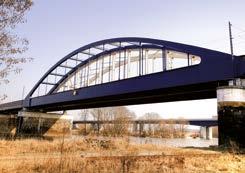
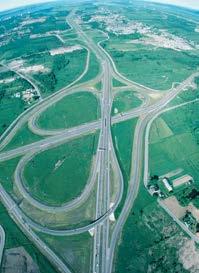
AUGMENTING AND EVALUATING THE PHYSICAL AND DIGITAL INFRASTRUCTURE FOR CCAM DEPLOYMENT p. 6-7

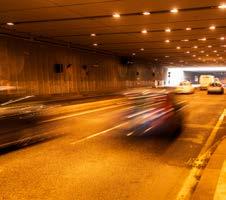

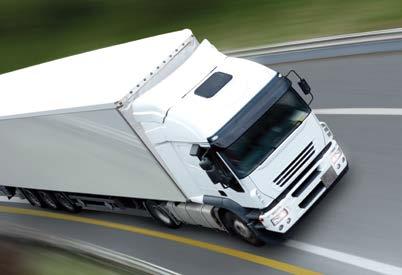

LOW NOISE PAVEMENTS AND BD-PAVE (FEHRL INITIATIVE) p. 8-9
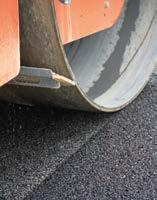
TRA 2022 p. 12
TRA VISIONS 2022 p. 13
ISSUE 19 | APRIL 2023
PUBLISHED BY FEHRL
Square de Meeûs, 35 1000 Brussels | Belgium
www.fehrl.org
ISSN: 2294-8295
INNOVATION FOR TRANSPORT INFRASTRUCTURE
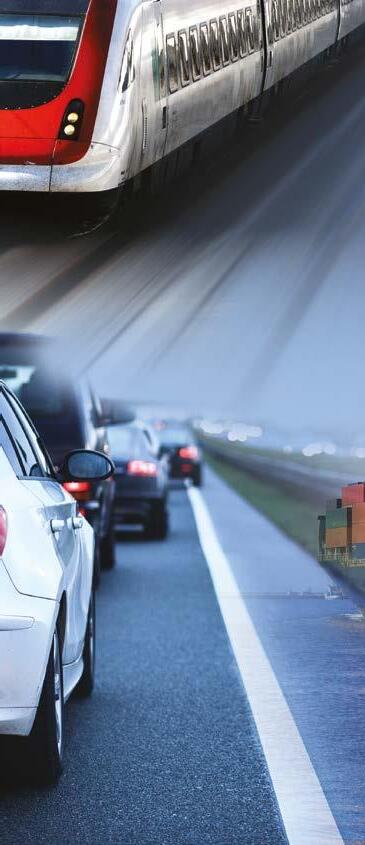
Transport infrastructure is the lifeblood of modern society, but often struggles to meet demands and expectations on reliability, availability, maintainability, safety, environment, health and cost. FEHRL’s role is to provide solutions for the challenges now faced and anticipate the challenges to come. Through innovation, the operation of transport infrastructure can address society’s needs.
FEHRL encourages collaborative research into topics such as mobility, transport and infrastructure, energy, environment and resources, safety and security as well as design and production.
Editor
Thierry Goger thierry.goger@fehrl.org
Editorial team
Adewole Adesiyun, FEHRL
Angelica Coldibeli, FEHRL
Denisa Nela, FEHRL
Xavier Cocu, BRRC - OCW - CRR
DESIGN AND LAYOUT
Belgium
© FEHRL 2023
Disclaimer
The articles published in this FIRM Magazine reflect only the views of the authors. The Publisher is not responsible for any use that may be made of the information they contain.
I 2
COLOPHON
4-5
EDITORIAL FROM THE SECRETARY-GENERAL AND A MESSAGE FROM FEHRL PRESIDENT

6-7
AUGMENTING AND EVALUATING THE PHYSICAL AND DIGITAL INFRASTRUCTURE FOR CCAM DEPLOYMENT



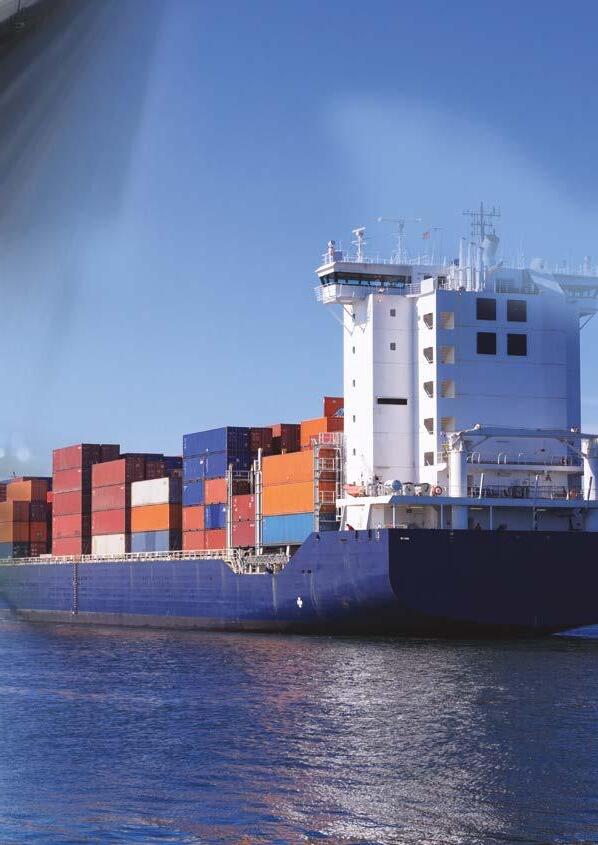
8 IMPROVING HEALTH AND WELLBEING IN EUROPE THROUGH LOW NOISE PAVEMENTS

9 10-11
BIG DATA FOR SMART PAVEMENT MANAGEMENT

12 13
FUTURE-HORIZON
#TRA2022 IN LISBON SUCH A SUCCESS!
TRA VISIONS 2022 AWARDED PRIZES TO YOUNG AND SENIOR RESEARCHERS AT TRA 2022

ISSUE 19 | FEBRUARY 2023
For more information, also see:
www.fehrl.org
facebook.com/fehrlcomms
twitter.com/fehrlcomms

linkedin.com/company/fehrlcomms
instagram.com/fehrlcomms
youtube.com/user/fehrlmovies
WELCOME
Welcome to the 19 th issue of FEHRL’s Infrastructure Research Magazine (FIRM), which outlines how FEHRL provides transport infrastructure solutions for current and future challenges.
First of all, dear readers, I would like to raise your awareness about the change of the FEHRL Modus Operandi as from the 1st of January 2023. The aim is to further adapt the organization to cope with the various and complex challenges ahead in the transport infrastructure related research. FEHRL has therefore streamlined its governance and widened its inclusiveness and cooperation with its members, partners and stakeholders to embrace better the holistic approach needed in its research activities. I have the pleasure to welcome and introduce the new FEHRL Board:
• President: Aleš Žnidarič (ZAG);

• Vice Presidents: Kelly Regal (FHWA) and Tomas Svensson (VTI);
• Members: Agnès Jullien (UGE), Jānis Barbars (LVC) and Markus Oeser (BASt);
• Past President: Maria de Lurdes Antunes (LNEC).
I am also delighted to announce the election of Xavier Cocu (BRRC) as Chair of the Research Committee. This committee will be in close interaction with our three new Working Groups respectively dealing with Built Environment, Natural Environment and Social environment. The Working Groups will be the perfect place to plug-in the members` expertise with the one from
the partners and stakeholders, as well as stimulate the knowledge exchange and development around transport infrastructure related issues.
The FEHRL Infrastructure Research Meeting (FIRM 23) that will be held on 25-26 April 2023 will also be a great opportunity to network and debate about strategic matters as well as promote current research activities. You are cordially invited to register and join us at Blue Point in Brussels.
FEHRL will also be active in skills development in 2023 through the edition of the FEHRL International Project Management Training (18-21 September, Brussels) as well as the Young Researchers’ Seminar 2023 (15-17 May, Lisbon) that is co-organized with ECTRI, FERSI, EURNEX and HUMANIST.

FEHRL has also kicked-off a very important project on CCAM. The Augmented CCAM project completes the portfolio of collaborative research that FEHRL is currently undertaking. I invite you to have a look at the Low Noise pavements activities, the development of the BD-PAVE initiative as well as the progress made in ALARTE. FEHRL is also very happy to be an active ERTRAC member and to contribute to the related Future Horizon project. Last but not least, I am happy to confirm the commitment of FEHRL to the TRA Conference and the TRA Visions activities, and I invite you to read about the success of the 2022 edition in Lisbon.
Thierry Goger FEHRL Secretary General thierry.goger@fehrl.org
4 I FEHRL'S FIRM ISSUE 16
MESSAGE FROM FEHRL’S PRESIDENT
Dear FEHRL Associates and Member Institutes,
Dear FIRM Magazine Readers,
It is an honour and a personal challenge for me to take on the role of FEHRL President during the upcoming 2023 –2026 term, following two lady presidents. I express my deepest gratitude to Dr Maria de Lurdes Antunes, who did a fantastic job taking us through the challenging COVID period.
FEHRL is now almost 35 years old. It started with thirteen member institutes from what was then Western Europe. The association developed rapidly. In 1994 it accepted the first two institutes from the new member states, ZAG from Slovenia and KTI from Hungary. This was when my involvement with FEHRL started, and I had the privilege of closely following its development, mainly as a Research Coordinator for well over 20 years. This period included some remarkable achievements, from extending membership throughout and outside Europe, preparing the Strategic Research Agendas that served as guidelines for the infrastructure sector, and fruitful cooperation between the institutes that resulted in many collaborative research projects. FEHRL was among the initiators of TRA conferences that grew beyond the most optimistic expectations and organises very successful FIRM conferences between the TRAs.
Over the years, many people changed at the institutes and in the Secretariat. Even the institutes themselves altered their names, status and objectives. Still, the main FEHRL driver remains to serve society by accelerating the development and facilitating the deployment of collaborative science, technical knowledge and innovative solutions for the road infrastructure sector. In other words, to foster innovation in the road infrastructure sector and beyond and to cooperate with partners from the European Commission, member states, other associations and people.
To follow in the footsteps of former FEHRL Presidents and those who have steered and successfully promoted and strengthened the family of similar yet different institutes is a great responsibility and a challenging task. I look forward to working with the Secretariat, the newly elected Board Members, the Research Committee Members and their chair, who spend their time for the benefit of the association. I am confident that with such a team and the new modus operandi that adapted our work to modern times, FEHRL will successfully cope with challenges in the coming years.
See you at the FEHRL Infrastructure Research Meeting in April.
Sincerely yours,
Aleš Žnidarič, FEHRL President ales.znidaric@zag.si
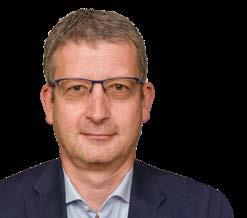
5 I FEHRL'S FIRM ISSUE 16
AUGMENTING AND EVALUATING THE PHYSICAL AND DIGITAL INFRASTRUCTURE FOR CCAM DEPLOYMENT
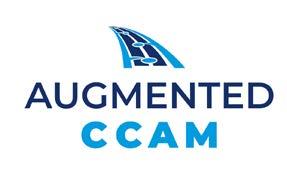
AUGMENTED CCAM is a Horizon Europe project (September 2022 –December 2025) aiming to understand, harmonise, and evaluate in an augmented manner adapted and novel support solutions of Physical, Digital and Communication (PDI) infrastructure, to advance its readiness for large scale deployment of CCAM solutions for all.
The AUGEMNTED CCAM project looks at tackling the following issues:
• Which are the priority Physical and Digital infrastructure (PDI) requirements and adaptations for different mixed traffic application contexts, transport modes and CCAM readiness?
• Which are the most cost-efficient technological paths to exploit existing and emerging PDI to support near future CCAM ensuring the safety and efficiency of the transport network as a whole?
• Which are the concerned adopters in each case and how can we reflect the varying governance and operational models in a service operational framework to be beneficial for all actors on technological and economic grounds?
• How can we put in place a “no-regret” process for decision making before proceeding to investments?
Physical infrastructure investments roadmap: 30-50 years
Digital infrastructure investments roadmap: 8-15 years
SCOPE
There are four backbone elements that constitute the concept of AUGMENTED CCAM, all of them interrelating and feeding each other in an iterative manner and in all possible combinations to lead to the improved, novel and viable CCAM-ready PDI. The first element is the harmonised and extended PDI classification & support scheme & requirements. This leads to the second element, which is the prioritised PDI adaptations and novel PDI support solutions across different CCAM use cases. The third element correlates to the Open Sharing Service Operational Framework and multi-cooperation models that enable the sense-plan-act approach, involving all CCAM actors. The fourth element is the augmented and iterative evaluation framework that, through the deployment of physical and virtual test beds and supporting simulation activities, will evaluate the applicability, viability of the proposed PDI support solutions and will assess their impacts.
AUGMENTED CCAM OBJECTIVES
• To explore, understand, elaborate, extend and harmonise PDI terminology, clustering, and support levels that will support co-determined PDI requirements and adaptations.
• To define an open sharing technology agnostic service operational framework and architecture for PDI-enabled CCAM services and solutions.
• To develop optimised and novel PDI support solutions aiming to enhance the AVs ODD and the whole transport system functional safety.
• To evaluate the proposed PDI based CCAM solutions applying an augmented and multi-layered operational and evaluation framework.
• To assess the impacts of the proposed PDI enhancements and novelties on CCAV ODD and CCAM operation on functional and traffic safety, driving behaviour etc
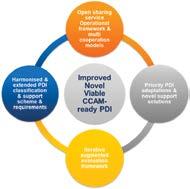
FEHRL'S FIRM ISSUE 19 6 I
• To come up with a roadmap and recommendations towards a harmonised PDI for large-scale CCAM demonstration and deployment.
TEST SITES
The PDI based solutions will be validated in 7 physical test sites across 3 European countries (France, Latvia, Spain).


THE FRENCH TEST SITE
• Test site 1 – Transpolis (Living Lab): TRANSPOLIS is a unique smart city lab in Europe dedicated to innovative transportation systems and road equipment, located in Saint-Maurice-de-Rémens near Lyon, France. safety barriers).
• Test site 2 - Zehns A63 – open traffic highway (A63)
• Test site 3 - COFIROUTE – open traffic highway (A10-A11)

THE LATVIAN TEST SITE
• Test site 1 – Open traffic rural/ sub-urban site, near Ādaži city (state main road A1, Local roads V30, V46, V48)
• Test site 2 - Closed racing track Biķernieki in Riga city.
THE SPANISH TEST SITE
The Spanish test site consists of three test sites:
• Test site 1 – open traffic urban area: route from «La Nave» to the subway station «Villaverde bajo-cruce».
• Test site 2- autonomous bus docking at depot at MadridEMT depot (Carabanchel).
EXPECTED OUTCOMES
• At least 5 new CCAM services deployed in the project test contexts.
• Αt least 1 new business model emerging in each project test context.
For more information, please contact Project Coordinator Thierry Goger
thierry.goger@fehrl.org

PARTNERS
• Endorsement of new classification schema by at least 5 road operators / constructors/owners and 10 Cities in the project - multiplied by 10 within 3 years after the end of the project.
• Adoption/application of the new service framework by at least 15 implementers (road operators, Cities)
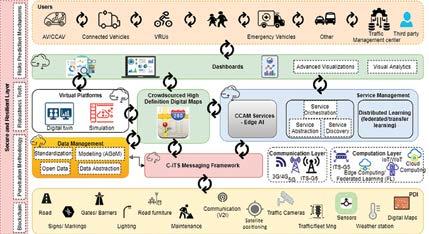
• At least 2 new corridors created in the project
• Proactive decisions on CCAM planning and PDI investments towards ‘no-regret’ measures in alignment with local policy goals, to the benefit of the society
Outcomes endorsed in the R&D agendas (CCAM SRIA), the CAD.eu Knowledge Base & CCAM SUMP Topic Guide
• ≈ 50% increase of probability for PDI investments
• ≈ 10% saving for investors
Funded by European Union
The AUGMENTED CCAM Project has received funding from the European Union’s Horizon Europe programme under Grant Agreement No. 101069717.
The contents of this presentation reflect only the authors’ view. The European Climate, Infrastructure and Environment Executive Agency (CINEA) and the European Commission are not responsible for any use that may be made of the information it contains.
7 I FEHRL'S FIRM ISSUE 16
IMPROVING HEALTH AND WELLBEING IN EUROPE THROUGH LOW NOISE PAVEMENTS





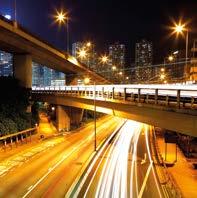
Road noise is recognised as having an impact on the comfort of those who live next to, or near busy roads. It is also known that continued exposure to road noise can pose risks to people’s health and wellbeing. The use of low noise pavements is an effective measure to mitigate the issues and many road authorities now build low noise pavements on new roads and on existing roads when they need resurfacing, thought the practice varies across Europe. Low noise pavements are more costly to install than standard pavements however, whilst there are concerns around their longevity 1
The development of low noise pavements was recognised as an important element in FEHRL’s 6th Strategic European Road Research Plan covering 2017 – 2020 and as a result a working group has been established comprising FEHRL members with an interest in this important topic, led by Dr Judita Škulteckė of VILNIUS TECH.



The group seeks to develop and exchange knowledge in has 4 broad areas; 1) how to improve the performance of new low noise pavements, 2) improve maintenance options of existing ones, 3) improving the performance and endurance of low noise pavements in cold climates, and finally 4) to compare the different techniques and technologies for monitoring road noise.
As reported in FIRM18 in February 2022, the group undertook a survey to better understand the types of pavements use and general policies towards low noise pavements in Europe.










The results in general showed that asphalt pavements are the most popular type of low noise pavements in Europe. However, countries have different approaches regarding how low noise pavements are categorised since there is no universal definition. This complicates the analysis of the survey results and the comparison of the performance of low noise pavements between different countries.
We have now collected information on the past experience and current practice regarding mixture composition and requirements as well as mechanical and acoustical performance of newly constructed low noise pavements and those in use for several years. Our aim in 2023 is to publish an article in a peer reviewed journal and to submit a conference paper in Forum Acusticum 2023 based on the collected information. Achieving this objective will be important in raising awareness of the work being undertaken in this area, and highlighting future tasks required to be undertaken.






To find out more about this initiative or get involved, please contact initiative leader Judita Škulteckė at judita.skultecke@vilniustech.lt or FEHRL Programme Manager, Martin Lamb at martin.lamb@fehrl.org

PARTNERS
8 I FEHRL'S FIRM ISSUE 16
1 Veisten, Knut & Akhtar, Muhammad Juned. (2011). Cost-benefit analysis of low-noise pavements: Dust into the calculations. International Journal of Pavement Engineering. 12. 75-86. 10.1080/10298436.2010.506537.
BRRC
BIG DATA FOR SMART PAVEMENT MANAGEMENT
Current status
The aim of the BDPave initiative is to investigate the possibilities and limits of Big Data-based methods in detail for application in the field of pavement management and to build up a knowledge repository within the FEHRL community.
In addition to the technically based work, BDPave has meanwhile established itself as a reference and offers active participants the opportunity to refer to it in the project acquisition process. In view of the fact that more and more calls for project proposals are being published with a focus on Big Data, Smart Data and Artificial Intelligence, and the evidence of commitment and knowledge of primarily civil engineering-oriented institutes in the area of these new technologies is not always entirely obvious, this can be considered a success and should be further expanded.

In recent years, the range of data available has increased enormously in variety, quality and quantity, also in the field of road construction technology. The task now is to identify relevant sources that meet the needs. Within the framework of BD Pave, an international survey was carried out in this regard. It turned out that data availability in Europe is quite good, but there are data groups that should gain in importance in the future and are only available to a limited extent. These include bearing capacity data for structural assessment and environmentally relevant data.
In individual institutes that are part of BD Pave, projects and work have been initiated that deal with the Big Data process steps of data cleaning, data preparation and data mining.
methods, technologies and issues in this area are developing very quickly. We encounter terms such as digital twin, block chain, virtual reality and quantum computing almost every day, even in the context of the road sector. It is therefore important to continuously adapt BDPave's strategies and approach to these developments.
Work package leaders / contributors: FEHRL, BASt, BRRC, UGE, VTI


Initiative members: LVC, NPRA, TRL, Vilnius Tech, ZAG, FHWA, LNEC


Programme Advisory Board: FEHRL, BASt, Highways England, Danish Road Directorate, Trafik-verket, Infrastructure de Portugal














For more information on the project, including understanding how your organisation can get involved, visit www.bdpave.eu, or contact the BD Pave Programme Manager, Martin Lamb at martin.lamb@fehrl.org
Leader of the group, Dirk Jansen jansen@bast.de


BRRC www.bdpave.eu
Overall, it can be observed that
PARTNERS
9 I FEHRL'S FIRM ISSUE 16
FUTURE-HORIZON
Future on-/off-road transport and mobility research, cross-border cooperation strategies, realization actions and procurement processes
Profiling future directions of Road Transport Research worldwide

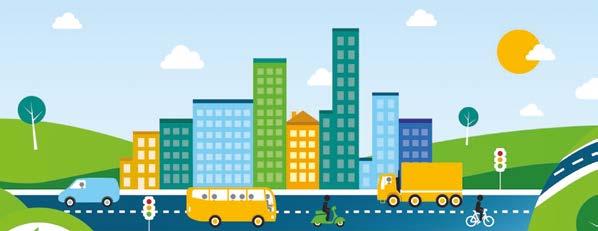
FUTURE-HORIZON is a H2020 EU project that aims to support the European Road Transport Research Advisory Council (ERTRAC), the future Horizon Europe partnerships of the upcoming framework programme Horizon Europe and the European Commission in identifying future research needs for upcoming R&I programmes to further facilitate a sustainable and efficient road transport system in Europe, while also extensively fostering international cooperation.

In addition, the project aims to contribute to the realization of the Green Deal objectives, as well as incorporate aspects of digitalization where possible. Through its strong international actions, the project fosters the development of inclusive societies and
thereby helping to reduce economic, social and territorial disparities.
To explore opportunities for complementing the strategic planning of the well-established road transport research (RTR) ecosystem in Europe by analysis, benchmark and collaborations with other world regions, a list of main players of the RTR ecosystem, divided into research institutes, suppliers, OEMS, mobility services providers and innovation policy has been elaborated. This has been completed with information about public funding programs and political framework conditions, and relevant technical innovations and socio-economic developments in road transport resulting in comprehensive factsheets for the United States of America, China, Japan and South Korea. The analysis covers the topical areas environment, electrification, automation and connectivity, urban mobility, freight and logistics as well as road safety. For these areas, the factsheets summarise relevant innovation policy goals, funding programmes and ongoing and planned road transport research activities. A map provides a
list of road transport players from the value chain, research and development institutes and mobility service providers for connectivity services to respective innovation policy actors. The factsheets shed light on specific socio-economic developments and impacts of the pandemic influencing research and development in road transport. The countries were profiled regarding their strategic direction for road transport research they are going to take. Future trends have been derived from government plans, company announcements and assessments of stakeholders, and have been reviewed by relevant reference points (ambassadors) in the different markets and countries. The relevant findings have been allocated to the corresponding topics of the ERTRAC Working Groups (Energy & Environment, Connectivity and Automated Driving, Urban Mobility, Freight & Logistics, Road Transport Safety & Security).
The outcome for the USA is shown in the picture below as an example, while the factsheets for China, Japan and South Korea can be found here.
10 I FEHRL'S FIRM ISSUE 16
INTERNATIONAL ROAD TRANSPORT RESEARCH
Research
Research in alternative fuels for heavy duty trucks (e.g. REFUEL projects funded by DOE, 2016)
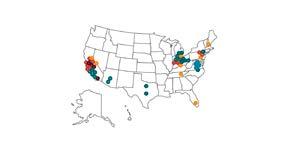
Main Players
BecomeAD market leader& safeguardcybersecurity& ensureprivacy6

Freedom of choice for consumers (manually/
Enhance inclusivity and accessibility, e.g. through automated driving6
2045: 100% electric truckssalesin California
Safe System Approach: Speed reg., safe vehicle design and infrastructure
Guarantee safety of automated driving6
Bipartisan Law:
Promotion of PHEVs (e.g. through DOE accelerator programme, 20 m$)
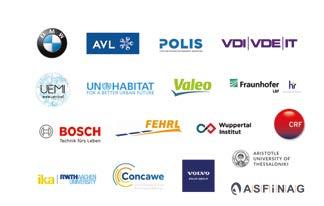
CARMA: Collaborative driving open source development (FHWA)
Complete Trip Programme: Intermodal transport (40 m$, ITS JPO)
Supertruck3: i.a. newenergy vehicle development(199 m$, DOE)
Road Safety
Freight & Logistics
Connected Vehicle Pilot Programme (USDOT): Advanced
Automation & Connectivity
RTR for vehicle automation pushes research in advanced manufacturing, and vehicle-based decision making using AI& quantum computing
Automated delivery with light duty vehicles and drones (ODOT)
UDELV: The start-up delivers groceries and goods for Walmart for mid-and lastmile by its automated, modular container pods.
amount of energy use through automated driving (DOE3)
V2V and V2I demonstration with 5G (CARMA, FHWA)
on data-driven fleet management for shared micro mobility (Santa Monica, CA)
Socio-Economic Developments
Car-centric mobility system
Strong IT-industry and startups as drivers for innovation
Cost-intensive, usually governmental tasks like provision of charging infrastructure are carried out in some cases by the private sector
Shortage of about 60.000 drivers in the logistic sector
Conclusions
Connected Vehicle Pilot Programme: In the NYC-pilot, vehicles connected to road side units and wirelessly with each other test safety issues with pedestrians with/without disabilities (USDOT//NYCDOT)
This project has received funding from the European Union’s Horizon 2020 research and innovation programmeunder grant agreement No 101006598. This document reflects only the author’s view. The Commission and CINEA Agency are not responsible for any use that may be made of the information it contains.
The FUTURE_HORIZON project has received funding from the European Union’s Horizon 2020 research and innovation programme under grant agreement No 101006598.
This article reflects only the author's view. The European Climate, Infrastructure and Environment Executive Agency (CINEA) and the European Commission are not responsible for any use that may be made of the information it contains.
Impacts of COVID-19
United Auto Union and the three Detroit OEMs neglected bailouts 2 b$ grants for transport providers during COVID-19 pandemic due to low occupancy rate
Automated delivery start-up like Nurogained market share for delivery of pharmaceutics and medical goods
Automateddrivingresearchfundingisahighpriorityacrossgovernmental departmentsduetoitspotentialforroadsafety,insurance,availabilityandhealth ofworkforce,energysavings,militaryandfarming.Duetochallengestoprovide mobiledatacoverageinsomeregionsinthe US,vehiclesneedtoapplymostof the decision-makingcapabilitiesin-vehicle,thoughsomeprojectsaimto strengthenV2I.Inmostcases,thegovernmentdoesnotsetspecific, timelygoals fortheindustry,sincethe US aimsatfosteringmarket-driveninnovation.
TheUS stillfocusesbothresearchonICEsandelectricmobility.Regional solutions,pilotsandlegal„patchwork“forautomatedorelectricmobilityhinder nationwidescale-up.Activitiesofnewinitiativesandoffices,liketheJointOfficeof EnergyandTransportorARPA-EandtheupcomingAPRA-Ccouldpossibly fosterresearchanddevelopmenttousesynergiesofautomationand electrification.
This series of factsheets highlights main framework conditions as well as goals and significant future trajectories of road transport research (RTR) for China, Korea, Japan, the US and the EU for the next 10 –15 years. This is an activity of the EU project FUTURE HORIZON. Urban Mobility Energy & Environment Electrification
Gereon Meyer VDI/VDE-IT gereon.meyer@vdivde-it.de
FACTSHEET U.S.A.
Activities 2030: Carbon reduction by 50% (cmp. to 2005) 2050: Carbon-Neutrality1 10 min quick charge cells for 500 miles coverage (SK innovation U.S. research) Bipartisan Law: Hydrogen hubs for production& delivery (9,5 b$, DOE)2 2030: Half of U.S. sales to be zero emission vehicles; no ICE phase-out5 NEXTCAR: Automated driving for energy reduction (18 m$, ARPA-E) Reduce overall
automated driving)6 Connected Vehicle Pilot Program (Phase 3, DOT) Apply AI
performance
2019:
ARPA-E NEXTCAR
to road-side infrastructure to save energy Explore transfer potentials of AV for duty vehicles and busses for public transit 2019:
U.S.
Support consumer choice for mobility Inclusive Design Challenge: Inclusive automated vehicles (5 m$, DOT)
and high
computing to anticipate and reduce congestions
Apply the
AV algorithms to offload computing
Semi-automated postal trucks service on a 1000 miles route in Texas by the
Postal Service
FL
environmental
safety
3 tests finished in 2021) 2035 -2040: Some federalstateslike California phaseout ICE Strategic Innovation Policy Goals and Programmes Automation in logistics shallimprovethehealth oflabour6 Oklahoma Advanced Mobility Pilot: Automated Delivery (ODOT) Technology-neutrality to allow the industry to find the best solutions5 Alternative Fuel Corridors:e.g. hydrogen, propane charging (DOE) Social acceptance studies of PHEVs R&D
Driver Assistance System tests, collaborative driving with road side units for passenger and heavy duty vehicles in Wyoming, NYC, NY and Tampa,
addressing
and
(Phase
Clean busses/trucks (3.7 b$) & EV chargers (7,5 b$)2 Research for redundancy in mobility systems and definition of systems that accommodate mistakes (Save System Approach) Truck platooning demonstrator cooperative adaptive cruise control on Interstate 66, (Exploratory Advanced Research Programme, FHWA) Private sector-driven standardisation of automated driving levels and technical requirements through SAE International Voices: Virtual Open Innovation Collaborative Environment for Safety between the state and private sector for innovation in safe AD (DOT) Pedestrian & bicyclist communication through headlights projecting signs Energy Storage Grand Challenge3 End-to-end domestic battery supply chain (7 b$)2 & Next-Gen Batteries EV-battery recycling and second-use for EVbatteries (60 m$, EERE, DOE) Mitigating impacts on grid of 10 millions EVs to be charged in the future (DOE) References 1 Whitehouse (2021). ICYMI: President Biden Signs Executive Order Catalyzing America’s Clean Energy Economy Through Federal Sustainability 2 Whitehouse.gov (2022). Bipartisan Infrastructure Law 3 DOE (2020). Energy Storage Grand Challenge. Roadmap 4 Whitehouse.gov (2022). Inflation Reduction Act and Chips and Science Act 5 Whitehouse (2021).FACT SHEET: PresidentBiden Announces Steps to Drive American Leadership Forward on Clean Cars andTrucks. 6DOT (2019).Automated Vehicle Leadership 4.0 High-power traction inverters for EVs Electrification Automation& Connectivity Freight/Logistics Exploratory Advanced Research Programme (FHWA) Driverless taxi pilot by WaymoOne (Phoenix, AZ) OEMs Ford GMC Tesla Chevrolet 1 2 3 4 Chrysler 5 Buick 6 Jeep 7 Zoox 8 Lordstown 9 Canoo 10 Optimal-EV 11 Local Motors 12 Next Future 13 Nuro 14 UDELV 15 Nikola 16 Start-up OEMs 17 18 19 Toyota VW BMW Innovation Policy DOE DOT ARPA-E ITS JPO 1 2 3 4 Proterra 1 Suppliers Ridecell GATIK 2 3 4 5 Embark trucks 6 Intel 7 8 Bollinger NVIDIA 9 Borg Warmer Panasonic 10 Bosch Mobility Service Providers Waymo TuSimple 1 2 Ridecell 3 Veniam 4 Aurora 5 Research Institutes Stanford University Oak Ridge National Laboratory 1 2 MIT 3 American Center for mobility 4 Freight Mobility Research Institute ArgonneNational Lab 5 6 VOLPE 7 UC Davis ITS 8 V.2.2 (11 November 2022) ©CarryLove/AdobeStock IRA: Large investment in energy & climate initiatives (369 b$)4 45% reduction to $80/kWh manufactured cost for a battery pack by 2030 for a 300-mile range electric vehicle (DOE3) Chips and Science Act: Funding R&D/production of autom. chips (2 b$)4 11 I FEHRL'S FIRM ISSUE 16
THANK YOU!
A huge thank you to all 2000+ participants, 600+ speakers, 60+ exhibitors and many more for making #TRA2022 in Lisbon such a success!
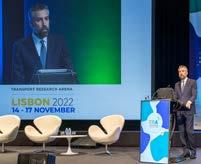
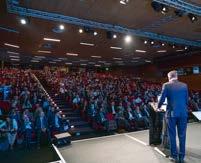
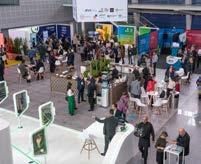
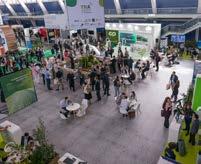
As put into words by Professor Emeritus and TRA ambassador José Manuel Viegas, during the main #TRA2022 Conclusions: “TRA is essentially a moment for launching new ideas, its outcomes being first felt at a personal level and, over time, evolving into collective wisdom. It has been a content-rich, beautifully organized conference and a visible happiness of Together Again“.
We thank you again for coming to Lisbon and making this week an unforgettable mix of research, innovation, policy and networking moments.

See you at TRA2024 in Dublin!
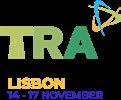
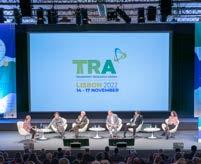
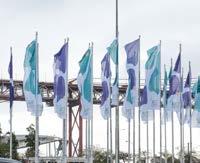
For more information visit www.traconference.eu
This article reflects only the author's view. The European Climate, Infrastructure and Environment Executive Agency (CINEA) and the European Commission are not responsible for any use that may be made of the information it contains.
This project has received funding from the European Union’s Horizon 2020 research and innovation programme under grant agreement number 859887
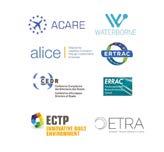
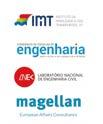
TOGETHER WITH IN COORPERATION WITH CO-ORGANISED BY HOSTED AND ORGANISED BY
12 I FEHRL'S FIRM ISSUE 16
TRA VISIONS 2022 AWARDED PRIZES TO YOUNG AND SENIOR RESEARCHERS AT TRA 2022
The EC-funded TRA VISIONS 2022 competition awarded prizes to both its young and senior researcher winners at two separate ceremonies at the 2022 Transport Research Arena (TRA 2022), held from 14-17th November 2022 in Lisbon, Portugal.

SENIOR RESEARCHER WINNERS
YOUNG RESEARCHER WINNERS
IN THE RAIL SECTOR, THE WINNERS WERE
• Thomas McDonald (Newcastle University)
• Benjamin Smakic (KTH University of Technology)
• Markus Loidolt (Graz University)
IN THE WATERBORNE SECTOR, THE WINNERS WERE
• Ghalib Humayan Taimuri (Aalto University)
• Paul Lee (University of Strathclyde)
PARTNERS
The TRAVISIONS 2022 Senior Researcher Competition received 106 entries of which 50 were longlisted
• In the road sector, the winner was George Yannis (National Technical University of Athens)
• The rail winner was Nicole Dörr (AC2T research GmbH)
• Mehmet Atlar (University of Strathclyde) was the winner in the waterborne sector.

• Bruno Santos (Delft University of Technology) was the winner in the airborne sector.

• The fifth winner was Anu Tuominen (VTT Technical Research Centre of Finland Ltd
In the TRA VISIONS 2022 Young Researcher Competition, a total of 204 young researchers submitted 107 ideas. The participating young researchers were from 26 different EU countries and 78 different universities and institutions. T In the TRA VISIONS 2022 Young Researcher Competition, a total of 204 young researchers submitted 107 ideas. The participating young researchers were from 26 different EU countries and 78 different universities and institutions.
IN THE ROAD SECTOR, THE WINNERS WERE
• Christina Makoundou AlmaMater (University of Bologna)
• Michael Dodman, Chuanshang Yin, Kuorun Liu (University College London)
• Robert Corbally University College Dublin

For more information, contact Project Coordinator George Smyrnakis at george. smyrnakis@newcastle.ac.uk . Look up TRA Visions on Facebook, Twitter or LinkedIn or see www.travisions.eu/TRAVisions
• Chris Greenhough (University College London)
IN THE AIRBORNE SECTOR, THE WINNERS WERE
• Gleb Panfilov, Juri Lukanov, Emils Aliks (Riga Technical University, Mtaf Faculty)
• Nicola Cavagnetto, François Brambati, Marco Fusar Poli (Università Cattolica del Sacro Cuore)
• Ulrike Schmalz (Otto Beishem School of Management – WHU)
FINALLY, IN THE CROSSMODALITY SECTOR, THE WINNERS WERE



• Arkadiusz Drabicki (Cracow University of Technology)
• Shaghayegh Rahnama (Zaragoza University)

• Rui Henriques (Instituto Superior Técnico)
This document reflects only the author’s view. The Commission and CINEA Agency are not responsible for any use that may be made of the information it contains. This project has received funding from the European Union’s Horizon 2020 research and innovation programme under grant agreement number 101006593
HELLENIC INSTITUTE OF TRANSPORT CERTH HIT
13 I FEHRL'S FIRM ISSUE 16
25 & 26 APRIL 2023
JOIN US AT THE FEHRL INFRASTRUCTURE RESEARCH MEETING 2023















#FIRM23
THE THEME WILL BE "MOBILITY IS CHANGING, OUR ROADS TOO!"
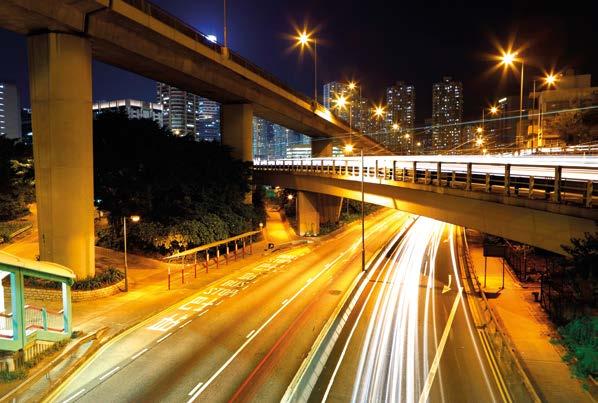
DATE: 25 & 26 APRIL 2023




WHERE: BLUE POINT - BRUSSELS
Key highlights will include:
Key addresses from FEHRL key stakeholders,























Several interactive sessions about current R&D&I activities in the field of transport infrastructures.
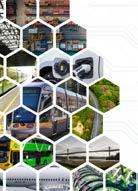
The registration is free of charge but mandatory Visit www.firmeeting.com

For more information & details, please contact us at info@fehrl.org
15-18 APRIL 2024

COME AND JOIN US AT TRA 2024
SAVE THE DATE AND COME AND MEET US THERE !
See www.traconference.eu for more details on TRA 2024





























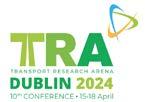

facebook.com/fehrlcomms
twitter.com/fehrlcomms

linkedin.com/company/fehrlcomms
www.fehrl.org
instagram.com/fehrlcomms
youtube.com/user/fehrlmovies
BRRC
BRRC
FEHRL MEMBERS
BRRC
FOLLOW US

















































